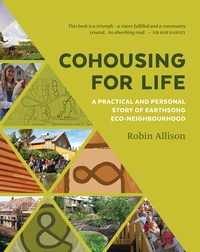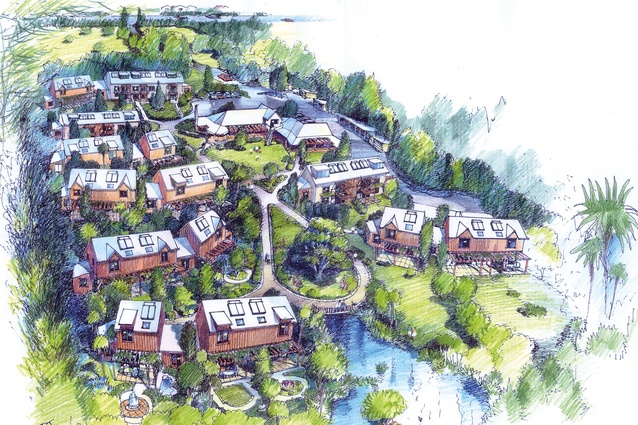Book review: Cohousing for Life
Abigail Hurst finds Robin Allison’s thought-provoking account of her life and the design and construction of the Earthsong eco-neighbourhood a frank and informative read.
The Earthsong ‘eco-neighbourhood’ was the first completed, purpose-built cohousing project in New Zealand – a tremendous feat, which was initiated and largely driven by architect Robin Allison. Cohousing for Life, written by Allison, is a documentation of her life and the 13-year design and construction phase of the Rānui eco-neighbourhood (1995–2008). Alternating between personal story and factual, ‘theme’-related chapters, Allison weaves an engaging and informative read that captivates heart and mind.

The book contains useful information, tools and reflections to equip any person contemplating involvement with a similar project themselves. However, it is primarily self-focused and does not detail other cohousing projects or more-recent trends, such as coliving. Nor does it reference the history of cohousing, aside from in the notes. Cohousing has seen a revival of interest in New Zealand over the past five years, as more individuals and family units seek alternative modes of property ownership in the wake of the widening divide between income and house prices.
While largely written for the ‘converted’ – those already interested in alternative models of community living – Cohousing for Life does briefly target common doubts, arguing that, if designed well, cohousing can provide both privacy and community, and autonomy and cooperation, with the needs and rights of the individual balanced with those of the greater collective. This principle aligns itself with that of permaculture – recognising underlying patterns in nature and identifying the ways in which buildings can be part of, and care for, these systems. Allison’s vision was based on this: to establish a cohousing neighbourhood that serves as an example of environmental, social and educational sustainability, and which ultimately contributes to the good of the planet.
A willingness to explore solutions at the edge of what is known led Allison and her team to fulfil the Earthsong vision, truly the first of its kind in New Zealand. Beginning with her childhood, we learn how the author set herself ambitious and admirable goals and, ultimately, found her purpose in cohousing. This journey is documented with surprising frankness, and the reader walks alongside Allison as she overcomes the trials of finding her place as a woman working in Auckland and architecture in the late 1980s and ’90s while being a mother.
This proved to be just the beginning of the architect’s navigation of personal and professional life, as her interest in sustainability and alternative modes of housing grew and the Earthsong eco-neighbourhood began to form. Her involvement as part of the community group and expertise as a building professional led to personal and interpersonal conflicts, culminating in her rejection by the group as project architect. Despite this, Allison resolved to remain involved and, eventually, her position as project coordinator was instrumental to the success of the eco-neighbourhood.
Cohousing for Life documents one person’s journey towards cohousing, as she negotiates private life, work and a complex set of relationships. Allison’s story is, in part, the Earthsong community’s narrative, set within the context of community governance and group decision-making, community design, sustainable building methods, power and leadership, and financial and legal structures. These themes are addressed in the chapters and punctuated with personal history; alongside photo records of people and progress on site, diagrams and drawings, insight and practical advice are given regarding the numerous challenges and complexities of a cohousing project.
“The buildings are the picture frame, the people and the life between the buildings are the picture.” This rings true and is fleshed out throughout the text, and we are invited to ask questions such as: What role should buildings play in our society? What good are we doing for the world in our own projects and practice? And might cohousing provide some of these answers?
Thought-provoking to the end, Cohousing for Life reveals the blood, sweat and tears behind achieving New Zealand’s first cohousing project. Allison’s continued perseverance in the face of endless obstacles to realise both her own and Earthsong’s vision reinforces the scale of this accomplishment. This book is an enjoyable, passionate read that bears witness to Allison’s rich contribution to educating the public in sustainability and to innovative housing design in New Zealand.










